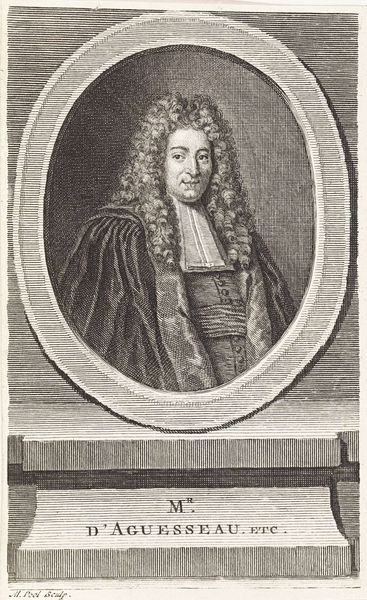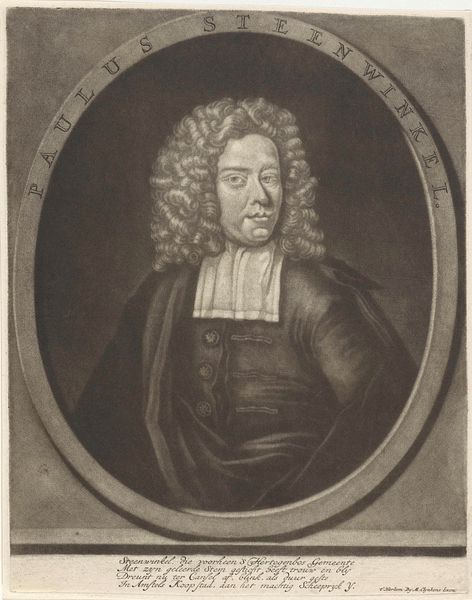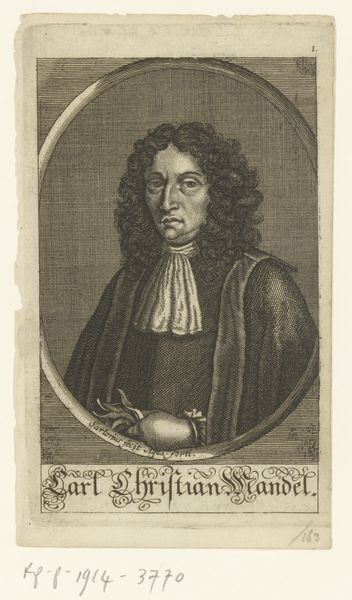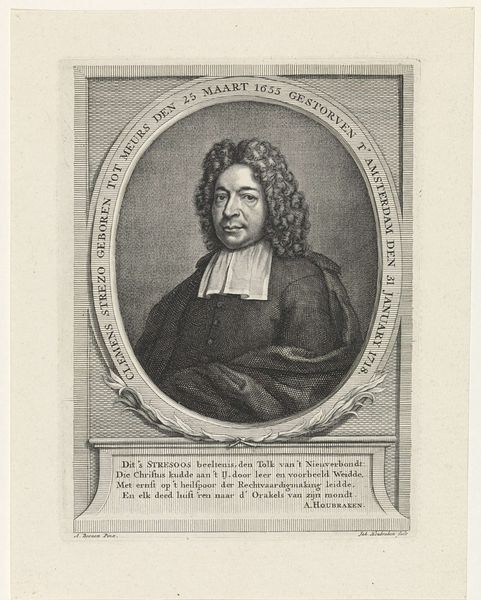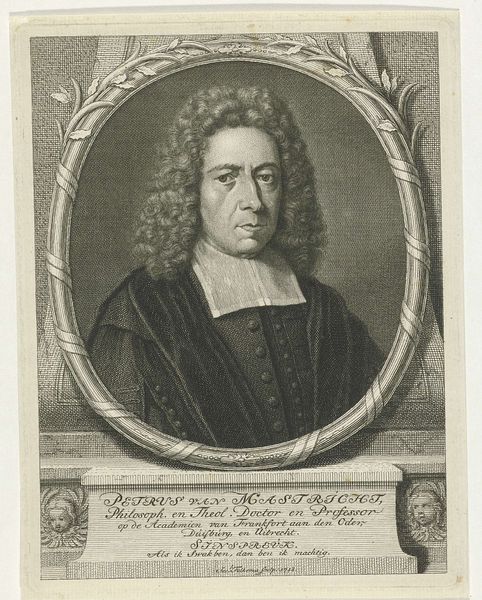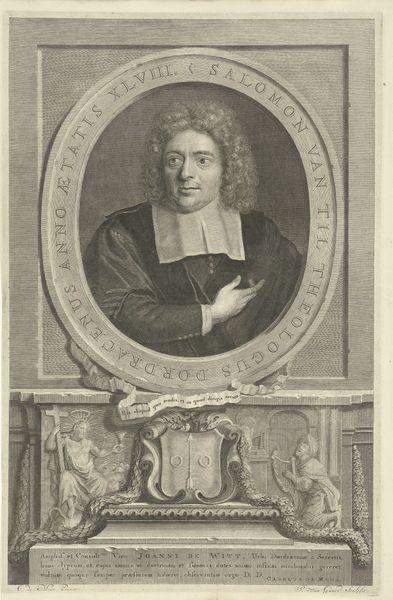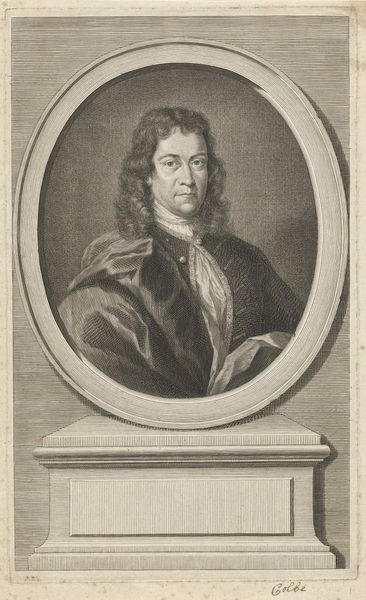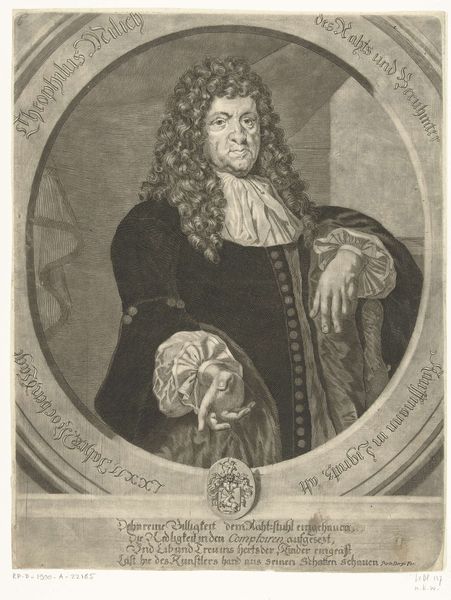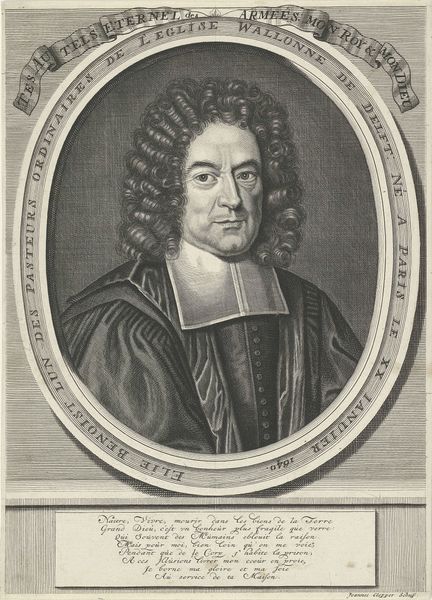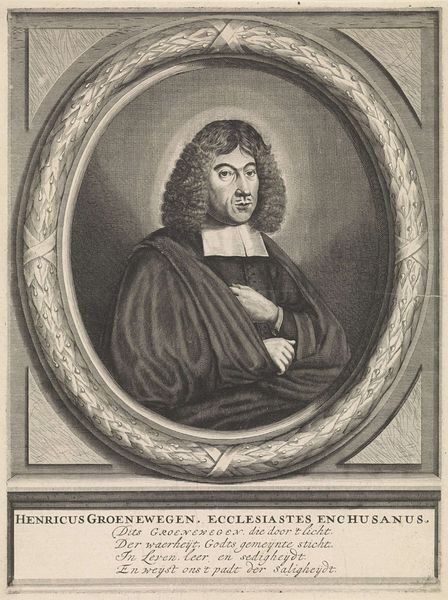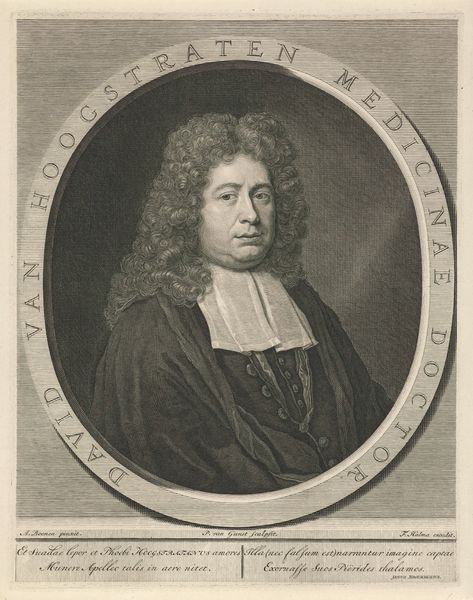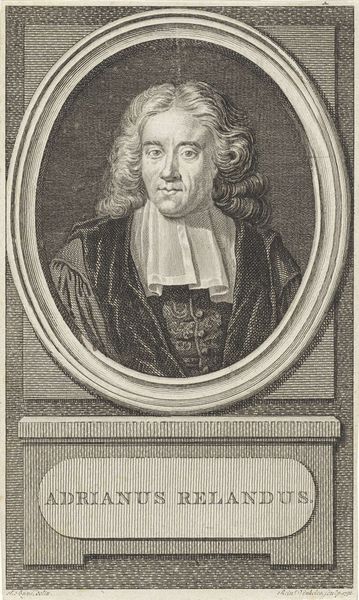
#
pencil drawn
#
aged paper
#
photo restoration
#
pencil sketch
#
old engraving style
#
personal sketchbook
#
historical photography
#
portrait reference
#
old-timey
#
19th century
Dimensions: height 180 mm, width 138 mm
Copyright: Rijks Museum: Open Domain
Curator: Let’s take a look at “Portret van Campegius Vitringa” by Pieter Tanjé, likely created sometime between 1716 and 1761. What are your initial impressions? Editor: It strikes me as very formal, even a bit austere. The tight cropping, the somewhat severe gaze, and the monochromatic palette create a sense of distance. It feels like an official portrait intended to project authority. Curator: Indeed. Tanjé created this engraving based on Campegius Vitringa, who was a very prominent theologian and professor of oriental languages and history. These sorts of portraits functioned as both a personal representation and a statement of social and intellectual standing in that historical context. It's crucial to analyze these works with this function in mind. Editor: I agree. One cannot ignore how portraiture in this era cemented power structures. Notice his clothing and the symbolic framing of his person within this oval cartouche, along with the Latin inscriptions. Who was this person? What was his relation to others in his field, socially, politically? These were powerful messaging tools that defined individuals. Curator: And this piece likely circulated widely through print culture at the time, further disseminating Vitringa’s image and, by extension, his intellectual influence. The medium itself contributes to our understanding, the etching on aged paper gives it a timeless almost antiquated quality. Consider how a similar image today would function within a very different system of social media, for instance. Editor: The inscription also hints at how Vitringa was perceived by his contemporaries—a scholar who produced numerous "pious books.” It really emphasizes how image and text were so intertwined in constructing public personas during that era. I'd like to consider how such portraiture perpetuates gendered and racialized power structures of its time. Curator: Absolutely. The portrait underscores the historical conventions of representing intellectual authority, typically granted to white men of a certain class. To understand it, we have to position Vitringa within the broader historical context of colonialism, religious institutions, and patriarchy that he belonged to and greatly benefitted from. Editor: Right, and by interrogating this work, we challenge that history. Looking critically, we can examine how art has participated in reinforcing specific ideas, shaping our current understanding. Curator: Agreed, seeing it today should make us question systems of knowledge. Thank you for that critical intervention!
Comments
No comments
Be the first to comment and join the conversation on the ultimate creative platform.
